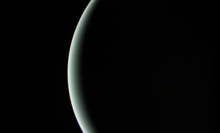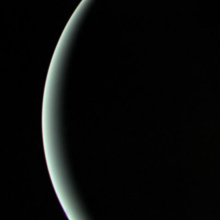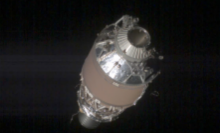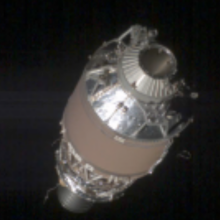The U.S. Army chose frigid, remote Greenland for a secretive Cold War project code-named "Iceworm." Years later, NASA detected the project's buried base, called Camp Century, deep beneath the accumulating ice.
A space agency research plane swooped over the remote Arctic region this year, using an advanced radar to scan the changing ice sheet below.
"We were looking for the bed of the ice and out pops Camp Century," Alex Gardner, a NASA cryospheric scientist at NASA’s Jet Propulsion Laboratory, said in a statement. "We didn’t know what it was at first."
Camp Century existed between 1959 until 1967 until being abandoned. Engineers used huge plows to dig trenches into the snow and ice, and then covered them with arched ceilings and more snow. The base grew to 26 buried tunnels stretched over two miles. "It included dormitories, a kitchen and cafeteria, a hospital, a laundry, a communications center, a recreation hall, a chapel, and even a barbershop," the Atomic Heritage Foundation wrote. They installed a power nuclear reactor at the site, too.
The camp is now buried under at least 100 feet (30 meters) of ice. But NASA's Uninhabited Aerial Vehicle Synthetic Aperture Radar, attached beneath its Gulfstream III research craft, is capable of sending out radio waves (which ping back and show what's underground) both directly beneath and to the side, revealing the base.
The image below shows Camp Century's long abandoned structures and tunnels under Greenland's sprawling ice.


The ultimate vision for Camp Century, however, was much greater. It was a secretive scheme to hide nuclear missile launchers beneath the ice.
"Using the model at Camp Century, Project Iceworm planned to build an additional 52,000 square miles of tunnels — three times the size of Denmark — with the possibility of extending it to 100,000 square miles," the Atomic Heritage Foundation explained. "The Army planned to deploy 600 missiles, each four miles apart in trenches similar to those at Camp Century, and to build 60 Launch Control Centers (LCCs)."
Camp Century — both its structures and infamous legacy of hazardous chemical and radioactive waste — might not stay buried forever. The Arctic is the fastest warming region on Earth, and Greenland is melting some 270 billion tons of ice into the sea each year as the planet warms. Research concluded that the ice now covering Camp Century may grow vulnerable in the centuries ahead — though exactly how quickly is uncertain.
“The question is whether it’s going to come out in hundreds of years, in thousands of years, or in tens of thousands of years," said James White, a scientist at the University of Colorado in Boulder. "This stuff was going to come out anyway, but what climate change did was press the gas pedal to the floor and say, 'It’s going to come out a lot faster than you thought.'"
Topics NASA













